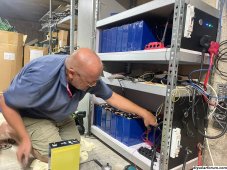TheHappyNomads
New Member
- Joined
- Dec 19, 2022
- Messages
- 139
I'm about to place an order for the initial supplies to build my first DIY batter bank. My goal is to build two banks of 16s 48v packs to hit a goal of ~29kWh (connected to (2) LV6548s
(32) Envision Grade B 305ah Cells
(2) JK-BMS 200A Continuous/350a Peak - 2A active balancing
Zketech EBC-A40L Capacity Tester
I know I'll need fuses, buss bars, and other items. Any pointers on what would work best for me?
(32) Envision Grade B 305ah Cells
(2) JK-BMS 200A Continuous/350a Peak - 2A active balancing
Zketech EBC-A40L Capacity Tester
I know I'll need fuses, buss bars, and other items. Any pointers on what would work best for me?



